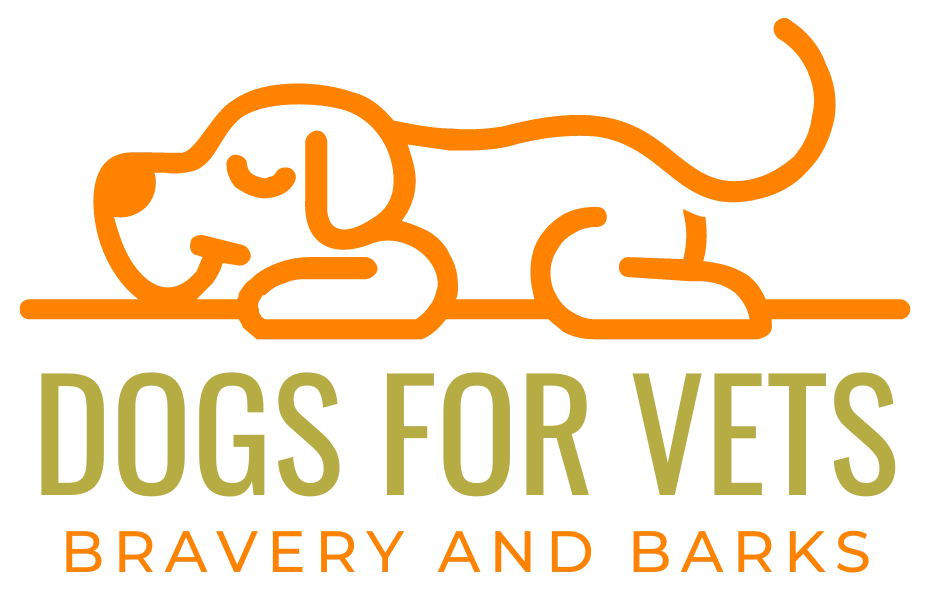This post may contain ads and affiliate links and we may earn a small commission when you click on the links at no additional cost to you. As an Amazon Affiliate, we earn from qualifying purchases. You can read our full disclaimer here.
Goldendoodle Paw Licking Personal Journey from Worry to Well
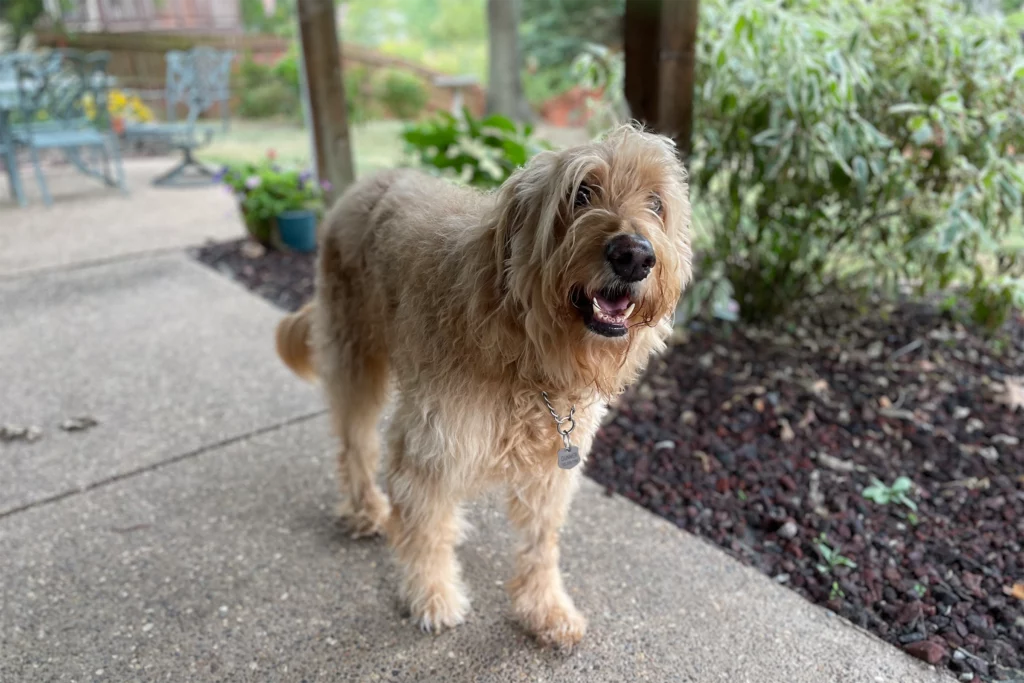
Goldendoodle paw licking can be a perplexing issue for many pet owners. Beloved for their friendly nature and adorable looks, Goldendoodles like my own dog, Gunner, often bring joy and a bit of mystery into our lives.
In this post, I’m sharing our journey with Gunner’s persistent paw-licking habit—a journey that’s not just about a quirky behavior, but a deeper health and comfort concern.
When Gunner first joined our family, his paw-licking seemed just a small quirk. However, over time, it became apparent that this was more than a simple habit.
Through trial, error, and many vet visits, we learned quite a bit. I’m telling our story here to help fellow Goldendoodle owners understand this behavior, and what might lie beneath it.
Sharing Personal Experiences of Goldendoodle Paw Licking, Not Veterinary Advice
Before going deeper into the specifics of Goldendoodle paw licking and the journey with Gunner, I want to emphasize an important disclaimer: Everything shared in this post is based on my personal experience with my own Goldendoodle, Gunner.
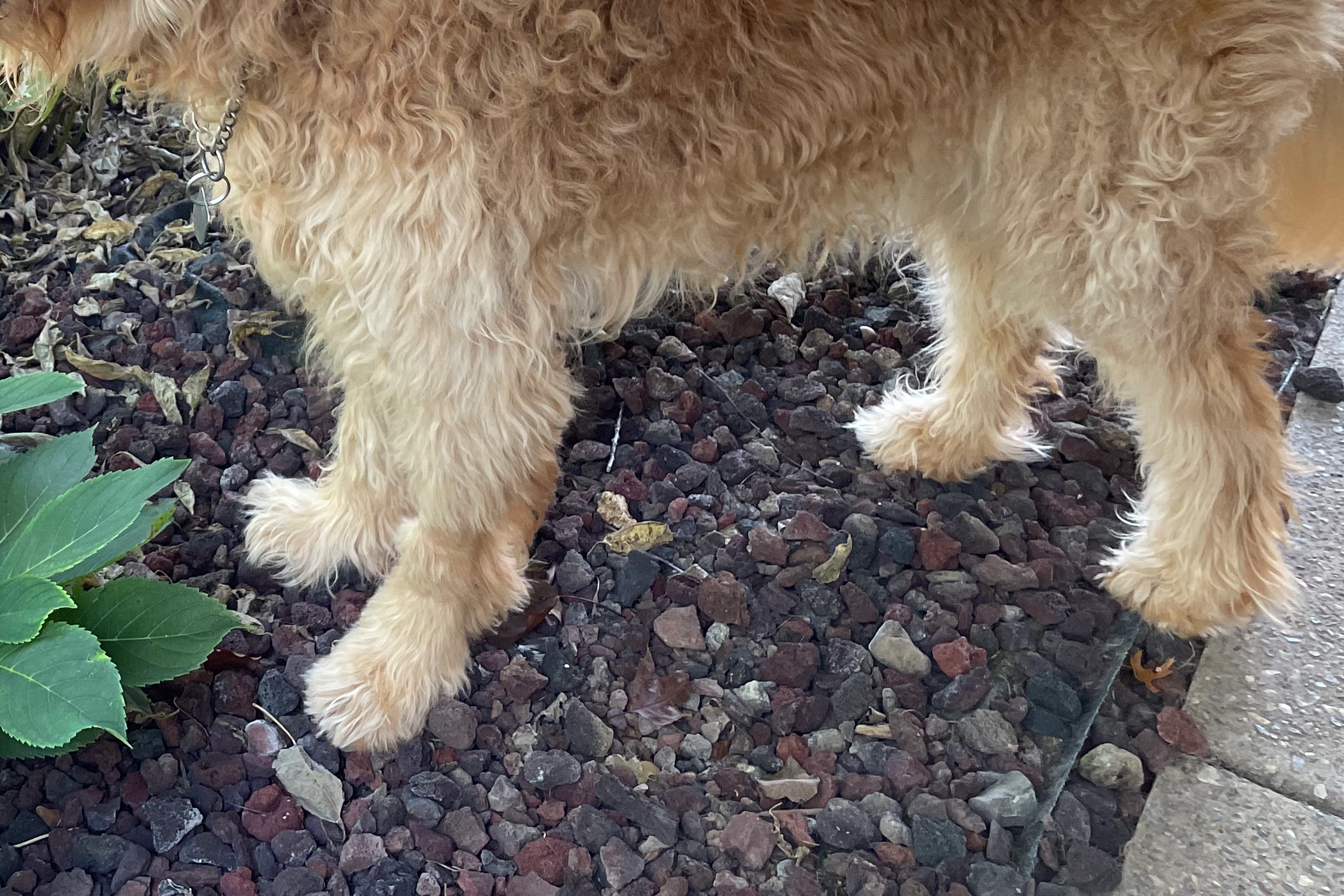
While I hope this story and the insights we’ve gained will be helpful to other dog owners experiencing similar issues, please remember that this is not professional veterinary advice.
Each dog is unique, and what worked for Gunner might not be the right solution for every Goldendoodle. It’s crucial to consult with a qualified veterinarian to get a proper diagnosis and treatment plan tailored to your dog’s specific needs.
Understanding Goldendoodle Paw Licking
Goldendoodle paw licking, a common behavior seen in this breed, often leaves owners searching for answers. But why do these lovable dogs engage in such frequent paw-licking? Is it a sign of something serious, or just a quirky habit?
Gunner’s Paw-Licking Habits
Now, let’s talk about Gunner. His paw-licking started off as a once-in-a-while thing but gradually became more frequent. Initially, I thought it was just a passing discomfort, maybe a small cut or a thorn in his paw. But as days turned into weeks, I noticed several things:
- Intensity and Frequency: Gunner’s licking became more intense, often leading to red, raw spots on his paws.
- Dislike for Grass: He began avoiding grass, which was unusual, especially for a Goldendoodle who usually loves romping around in it.
- Reddish Fur: The fur between his toes changed color, a sign I later learned was from the saliva’s reaction with his fur.
These signs were clues that something more was going on. It wasn’t just a random preference or habit; it was a clear indicator of discomfort.
Recognizing these symptoms in your Goldendoodle could be the first step in addressing this paw-licking mystery.
The Journey to Uncover the Cause of Goldendoodle Paw Licking
Goldendoodle paw licking can stem from various causes, each requiring its own approach and solution. When Gunner’s paw licking turned from an occasional to a more frequent behavior, I knew we needed to dig deeper to uncover the root cause.
This journey took us through a process of exploring potential causes, observing environmental factors, and experimenting with his diet.
Exploring Potential Causes
Identifying the reason behind Gunner’s paw licking involved looking at several potential factors:
- Allergies: Often a common culprit in dogs, causing itchiness and irritation.
- Irritation from Environment: Surfaces like salted roads in winter or hot pavements in summer can be harsh on paws.
- Behavioral Habits: Sometimes, licking can develop as a habitual response to stress or boredom.
- Underlying Health Issues: It’s important to rule out any health conditions that might cause discomfort or itchiness.
Recognizing these possibilities was crucial in guiding us toward appropriate solutions.
Gunner’s Dislike for Grass
A peculiar clue in understanding Gunner’s discomfort was his noticeable aversion to walking on grass. Initially, I couldn’t figure out why my Goldendoodle, usually a lover of outdoor frolics, suddenly became hesitant to step on the lawn.
This behavior hinted at a possible environmental irritant affecting his paws, potentially linked to the grass itself—whether it be the texture, temperature, or any treatments applied to it.
Diet Trials and Outcomes
In our quest to alleviate Gunner’s discomfort, we also delved into dietary changes. Common advice suggests that diet can significantly impact a dog’s overall health, including skin and coat conditions.
We tried a few different options:
- Grain-Free Diet: Aimed to reduce potential food allergies.
- Salmon-Based Food: Chosen for its skin and coat health benefits.
Despite these dietary adjustments, Gunner’s paw licking persisted. This outcome made it clear that his issue wasn’t primarily food-related, guiding us back to exploring other potential causes. This phase of trial and error, though sometimes frustrating, was vital in narrowing down the possible reasons for his paw licking.
It reminded me that what works for one Goldendoodle might not necessarily work for another, highlighting the need for personalized attention and care.
The Veterinary Adventures
Navigating the maze of Goldendoodle paw licking often leads to veterinary consultations, and that’s exactly where our journey with Gunner took us next.
These visits were eye-opening, offering both professional insights and highlighting the challenges in diagnosing such issues.
Veterinary Investigations and Their Limitations
Our visits to the vet involved several discussions and examinations, aiming to get to the bottom of Gunner’s paw licking. The vet conducted a range of checks:
- Skin and Paw Examinations: To look for any signs of infection, injury, or irritation.
- Allergy Testing: Attempting to identify specific allergens that might be causing discomfort.
- Dietary Reviews: Discussing Gunner’s diet to rule out food-related allergies.
Despite these thorough investigations, pinpointing an exact cause proved challenging. We learned that identifying specific allergies in dogs can be a complex and often inconclusive process.
Not every test will reveal what’s troubling our furry friends, and sometimes, the results can lead to more questions than answers.
The Challenge of Pinpointing Specific Allergies
The difficulty with specific allergies lies in their vast and variable nature. Environmental allergens, like pollen, dust, or even household cleaning products, can change with seasons and surroundings.
Food allergies, on the other hand, require rigorous testing and elimination diets, which can be both time-consuming and stressful for the dog and the owner.
In Gunner’s case, while allergies seemed a likely suspect, the exact triggers remained elusive. This uncertainty is a common scenario many dog owners face, emphasizing the need for patience and persistence in addressing canine allergies.
Impact of Constant Paw Licking
The constant paw licking had more than just a cosmetic impact on Gunner. The frequent licking led to:
- Raw Spots: Continuous licking caused sore, raw areas on his paws, which were painful and potentially prone to infection.
- Reddish Fur: The vet informed us that the reddish staining of his fur was due to porphyrin, a compound in dog saliva that can discolor fur when licked excessively.
These physical signs were more than just an aesthetic concern; they were indicators of Gunner’s discomfort and the urgent need to find a solution.
The veterinary adventures, although sometimes frustrating, were crucial steps in understanding and eventually managing this puzzling behavior in Goldendoodles.
Cytopoint: A Turning Point for Goldendoodle Paw Licking
After many trials and much tribulation in addressing the Goldendoodle paw licking problem, we discovered Cytopoint. This treatment marked a significant turning point in our journey with Gunner.
Introduction to Cytopoint Injections
Cytopoint injections are a relatively new form of treatment for dogs experiencing severe itching due to allergies. These injections work by specifically targeting and neutralizing a key protein involved in transmitting the itch signal to the brain.
Essentially, it helps in reducing the itchiness without using traditional medications like steroids.
Deciding to Try Cytopoint for Gunner
The decision to try Cytopoint came after numerous other attempts to alleviate Gunner’s discomfort had failed. Faced with his persistent paw licking, and after discussing with our veterinarian, we decided that Cytopoint might be a viable option to explore.
The prospect of giving Gunner relief from his constant itching and licking was a ray of hope for us.
The Effects of Cytopoint on Gunner
The results of the Cytopoint injections for Gunner were nothing short of miraculous. Here’s what we observed:
- Rapid Relief: We noticed a significant reduction in Gunner’s paw licking within just a few days after the first injection.
- Duration: The effects of the injection lasted for about two to three months, during which Gunner seemed more comfortable and less driven to lick his paws.
- Improvement in Paw Health: The raw spots began healing, and the reddish discoloration of his fur due to excessive licking started to fade.
These changes were a huge relief, not only to Gunner but to our entire family. Seeing him free from that constant need to lick his paws and able to enjoy life without discomfort was immensely gratifying.
Cytopoint may not be the solution for every dog with similar symptoms, but for Gunner, it was a game-changer.
We pay a little over $100 for Gunner’s Cytopoint injections. However, our pet insurance covers 90% of that! Even without the insurance, I think it is well worth it to keep his suffering away.
Living with a Goldendoodle’s Paw Licking
Goldendoodle paw licking can be a chronic issue for some dogs, including ours. Understanding this behavior and how to manage it is crucial for the well-being of both the dog and its owner.
Managing Expectations: Chronic Paw Licking
It’s important for Goldendoodle owners to recognize that paw licking might be a long-term challenge. Even with treatments like Cytopoint, paw licking can recur, especially if it’s linked to chronic allergies or deeply ingrained habits.
Accepting that this may be a recurring issue is key to managing it effectively and maintaining your pet’s quality of life.
Ongoing Care Post-Cytopoint
After starting Cytopoint, ongoing care becomes a critical part of the routine. Here are some essential points to consider:
- Frequency of Injections: Typically, Cytopoint injections are effective for 2-3 months. Monitoring when the symptoms start reappearing will help determine the right frequency for your dog.
- Regular Check-ups: Keep in touch with your veterinarian for regular check-ups and to adjust the treatment plan as necessary.
Tips for Monitoring and Reducing Paw Licking Behavior in Goldendoodles
Here are some practical tips to help manage and possibly reduce your Goldendoodle’s paw licking behavior:
- Keep an Eye on Environmental Triggers: Notice if the licking increases after walks or changes in the environment.
- Maintain Paw Hygiene: Regularly clean your dog’s paws to remove potential irritants.
- Engage in Regular Exercise and Play: Keeping your Goldendoodle active and mentally stimulated can help reduce stress-induced licking.
- Use of Dog Booties or Socks: In some cases, protecting the paws can prevent licking due to external irritants.
- Regular Grooming: Keeping the fur between the paw pads trimmed can reduce irritation and accumulation of debris.
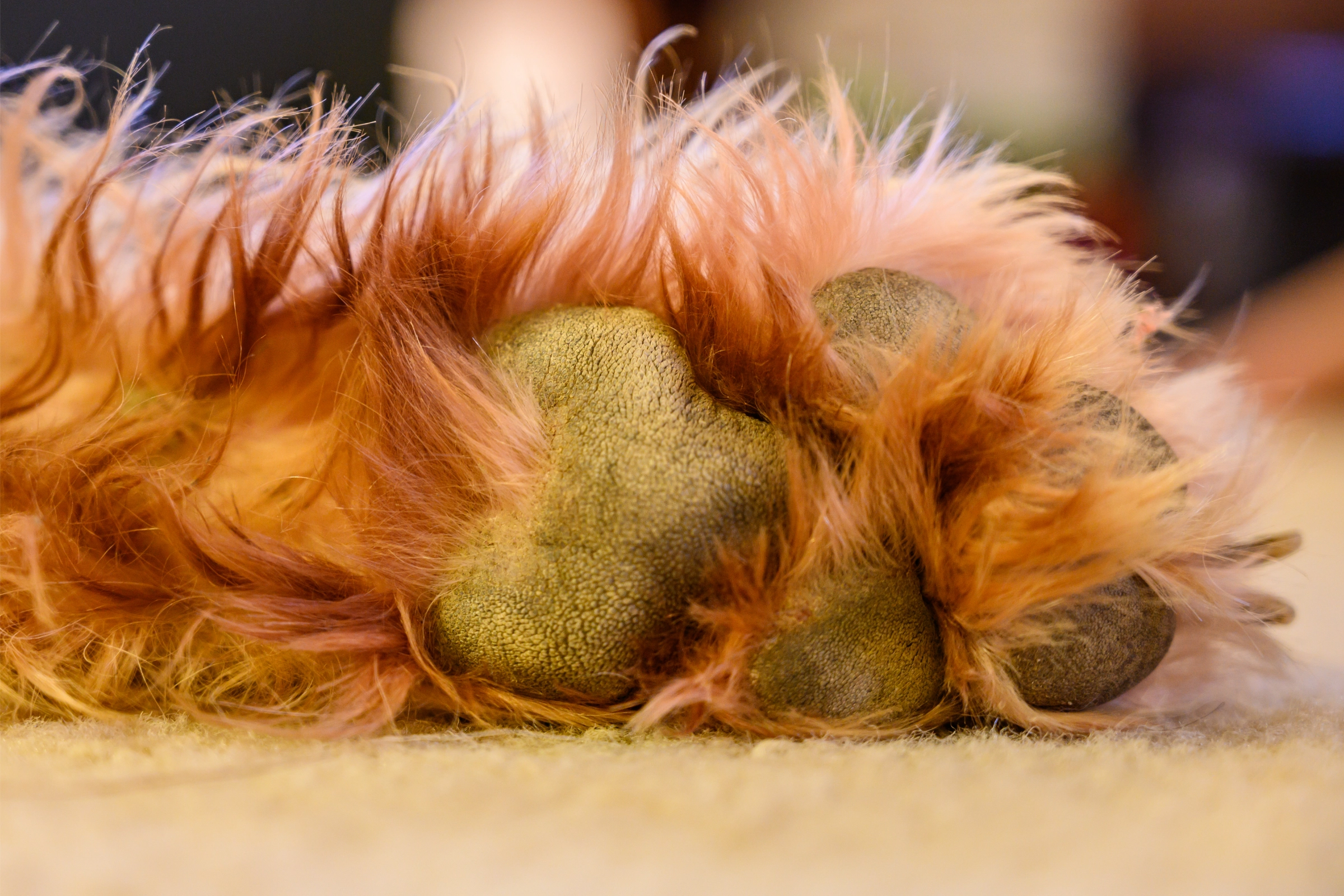
By actively managing and monitoring your Goldendoodle’s paw licking habit, you can help reduce their discomfort and maintain their happy, energetic lifestyle.
Remember, each dog is unique, so what works for one might not work for another. Keep experimenting and stay in close communication with your vet to find the best approach for your furry friend.
Finding the Right Diet for Gunner
In our journey with Gunner and his issue of Goldendoodle paw licking, we eventually honed in on a diet that seemed to support his overall health and well-being.
After experimenting with various foods and observing Gunner’s reactions, we settled on Purina Pro Plan Adult Sensitive Skin and Stomach, Salmon and Rice Formula, a dry dog food that made a noticeable difference.
No products found.
The Impact of Diet on Paw Licking
Initially, I wasn’t entirely convinced that Gunner’s diet was a major factor, especially since the Cytopoint injections were working so well. In an attempt to economize, I switched his food to a Costco brand.
However, about a month after this switch, I observed an increase in Gunner’s paw licking, happening much sooner than when his next Cytopoint injection was due.
This was a clear indication that his food did play a significant role in managing his condition. Upon switching back to the Purina Pro Plan formula, Gunner’s paw licking reduced markedly, reaffirming my decision to keep him on this specific diet.
Sticking to What Works
Now, I firmly believe in the combination of the Cytopoint injections and the Purina Pro Plan diet for Gunner.
The salmon and rice formula seems to cater well to his sensitive skin and stomach, thereby playing a role in controlling his paw licking.
Don’t miss our post about Goldendoodle’s Sensitive Stomachs!
Supplementing with Fish Oil
In addition to his regular diet, I also give Gunner fish oil supplements. While I’m not entirely sure of the extent of their impact, the supplements are known to support skin and coat health, which could be an added benefit in managing his condition.

Finding the right diet for a Goldendoodle, especially one with sensitivities like Gunner, can be a process of trial and error. However, once you find the right combination that works for your dog, it can make a significant difference in their quality of life and in managing issues such as chronic paw licking.
It’s always essential to keep an eye on how your dog responds to dietary changes and consult with your veterinarian, especially when integrating supplements or making major changes to their diet.
My Final Thoughts and Takeaways on Goldendoodle Paw Licking
As we wrap up our discussion on Goldendoodle paw licking, reflecting on Gunner’s journey brings valuable insights.
His story is a testament to the importance of patience and persistence in addressing pet health issues, especially those as perplexing and stubborn as persistent paw licking.
Recap of Gunner’s Journey
Gunner’s experience underscores that finding a solution to health issues like paw licking can often be a long road, filled with trial and error. From changing diets to trying out different medical treatments like Cytopoint injections, his journey highlights that sometimes, the answer isn’t immediate or straightforward.
We learned that even small changes, such as switching back to a trusted brand of food, can significantly impact our furry friends’ well-being.
Encouragement for Fellow Owners
If you’re facing similar challenges with your Goldendoodle, remember you’re not alone. Each dog is unique, and what works for one might not work for another, but don’t lose hope.
Stay observant, keep trying different approaches, and most importantly, remain patient. The breakthrough might just be around the corner.
Professional Veterinary Advice is Key
While personal experiences and anecdotes can be enlightening and helpful, they are no substitute for professional veterinary advice.
Every dog has its own set of needs and health conditions, which is why consulting with a veterinarian is critical. They can provide tailored advice and treatment options specific to your Goldendoodle’s health requirements.
Remember that caring for a dog, especially one with specific issues like paw licking, is a journey — sometimes challenging, but always rewarding. Stay informed, stay patient, and continue loving and learning from your incredible companions!
-
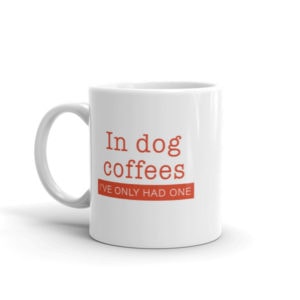
Coffee Mug – In Dog Coffees I’ve Only Had One
Price range: $11.95 through $14.95 Select options This product has multiple variants. The options may be chosen on the product page
